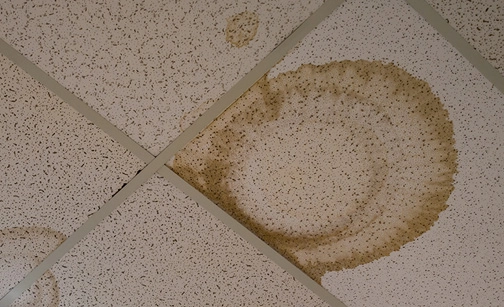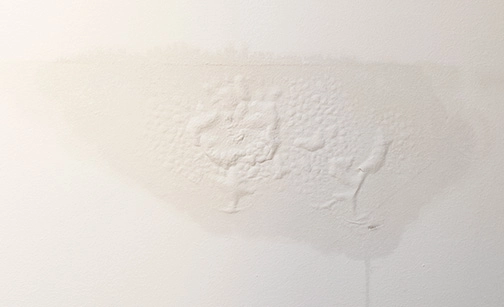Inspect Your Commercial Roof from the Inside to Spot a Problem on the Outside
A roof plays a critical role in protecting your commercial building or factory and everything in it—employees, customers, equipment, and inventory. It also helps to ensure year-round energy efficiency and a comfortable working environment. A leaking or damaged roof can disrupt a business’s activities, impede productivity, and impact profitability. Properly maintaining a roof isn’t optional—it’s an absolute necessity!


While some roof damage is detectable by sight—shingles that have blown onto the ground or a tree that has fallen into the structure—other types of roof damage are more subtle and can only be detected from inside the building. That’s why having a routine roof maintenance plan for both the inside and the outside of your commercial building is critical. Interior commercial roofing issues that are detected early can prevent minor issues from becoming a major roofing emergency. Even over a short time, small leaks can lead to big problems such as mold, rotted framing and sheathing, destroyed insulation, and damaged ceilings and walls.
So, what should you look for when inspecting the underside of your commercial roof? There are several roofing issues that can manifest inside a factory or commercial building that you should be aware of and look for to prevent damage.
Dripping Water, Water Stains, and Peeling or Bubbling Paint on Ceilings or Walls
The most obvious sign of a roof leak is water dripping from the ceiling or down a wall. Stains, peeling, and bubbling paint can also indicate water damage. Finding the source of the water/leak is the most difficult part of solving this problem. As such, the following items should be examined to determine if they are a source of the water damage visible from inside your commercial structure.
Holes
Although a penetration through the roof seems like the most obvious cause for a leak, it is often difficult to detect. Walk around the inside of your commercial facility and look up; do you see daylight? Do you notice a ‘shiner’? A ‘shiner’ is a nail that missed the framing member.
Roof Vent Issues
Go up on top of your commercial roof and check for cracked housings on plastic roof vents and broken seams on metal ones. You might be tempted to throw caulk at the problem, but that solution won’t last long. There’s really no fix other than replacing the damaged vents.
Damaged Shingles
If you have a roof with shingles, walk around outside and look for shingles on the ground. A broken shingle is a leak waiting to happen. This repair is pretty simple and should be performed immediately.
Gutters
Go outside and inspect your gutters. Gutter leaks usually start at rusty spots or seams that have opened because of expansion and contraction. These areas should be repaired. Missing “Gutter Aprons flashing” can also cause water issues. When water flows off the edge of the roof, it can cling to the underside and dribble toward the fascia. If you have gutters and no Gutter Apron flashing to stop the water from running into the gutter system, it will wick behind the gutter. Eventually the fascia, soffits, and even the roof sheathing will rot. All of this damage may be detectable from the inside.
Roof Membrane
If your facility’s roof has a membrane system, such as an EPDM coating, TPO roof coating, or PVC, you need to go up on top of your roof to look for cuts, tears, or punctures. It is also important to look for any areas where the membrane may be lifting or coming loose. If these areas are not addressed, water can leak into your commercial space.
Flashing and Sealants
Flashing and sealants help prevent water infiltration by providing a waterproof seal for many types of roofs, including metal building roof coatings, tile, and asphalt. If the flashing and sealants deteriorate or are damaged, water damage can result. Go up on top of the roof to inspect flashing and sealants. The sealants or caulking around vents, skylights, or other roof components should also be checked to ensure they are intact and in good condition. Flashing and sealants that are not functioning properly will allow water to enter a building.
Mold or Mildew Growth
Excessive moisture due to a roof leak can create conditions favorable for mold and mildew to grow. Walk around the inside of your commercial space and see if you notice any musty odors or mold on the interior walls or ceilings. If you detect either of these things, it’s likely the result of a water infiltration issue from the roof. Mold or mildew are most likely to form:
In Places Where the Roof & Exterior Walls Meet
If there is no kick-out flashing where a roof edge meets a sidewall, water will flow down the wall and possibly into it. This issue can become even worse if there is a door or a window below and water seeps behind the trim. You might not notice it right away, but eventually mold and rot will become visible and destroy both the sheathing and framing.
On Exterior Walls
A leaky roof can cause mold to grow on an exterior wall, which could be visible from inside the building.
Sagging Ceiling
The underside of your roof may not be leaking or discolored, but has the structure itself changed? Be sure to inspect all ceilings in your building to ensure there are no structural changes. Prolonged exposure to water can weaken the integrity of ceilings, leading to sagging or drooping in severe cases.
As you can see, by conducting a regular roofing Inspection that includes checking the underside of the roof, you can prevent costly roofing emergency repairs. If you notice any of the interior or exterior issues outlined above, you should hire a professional roofing company to make repairs, in addition to setting up a regular commercial roof maintenance program to prevent future problems from developing. Roof issues left unattended will lead to more extensive damage and costly repairs.